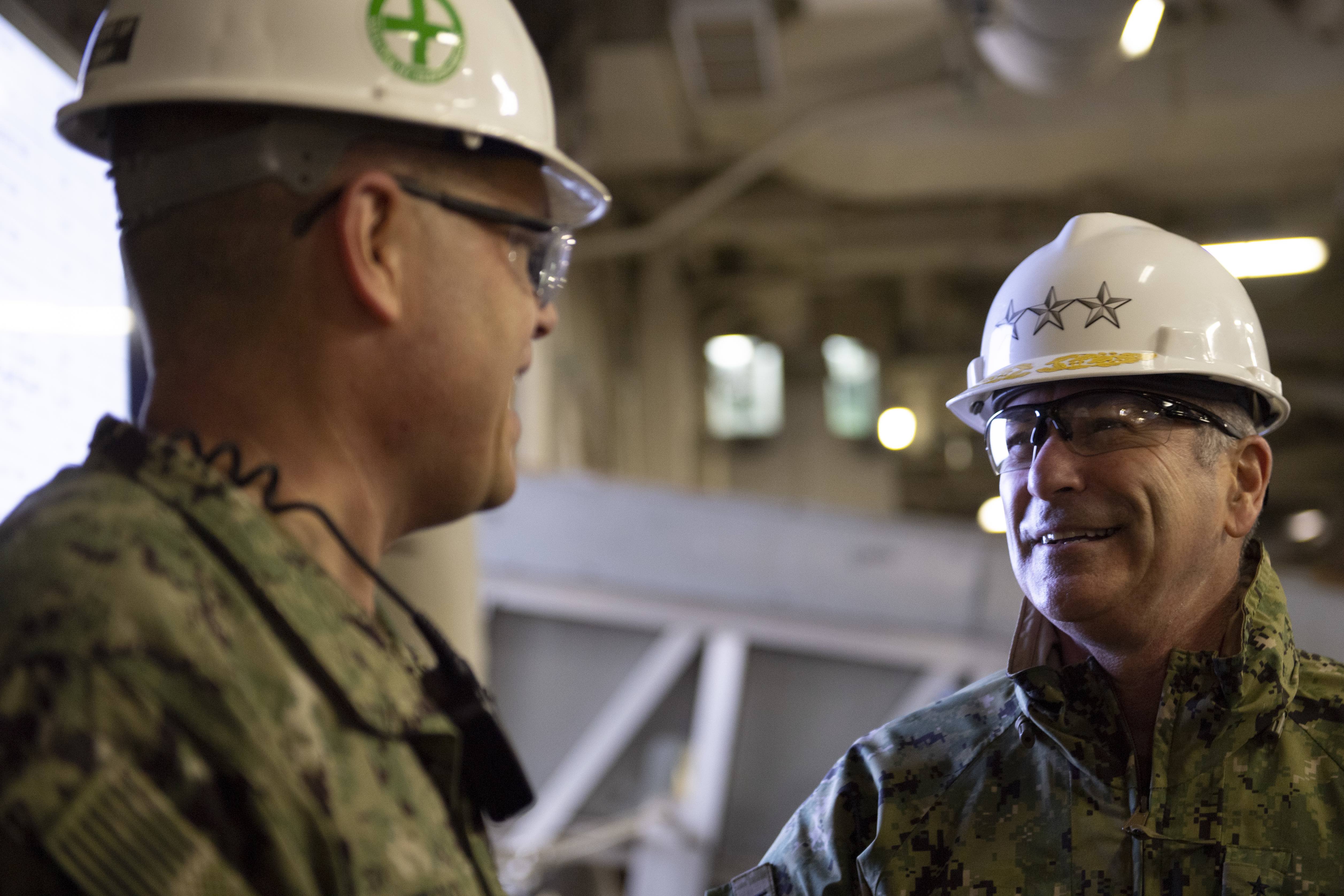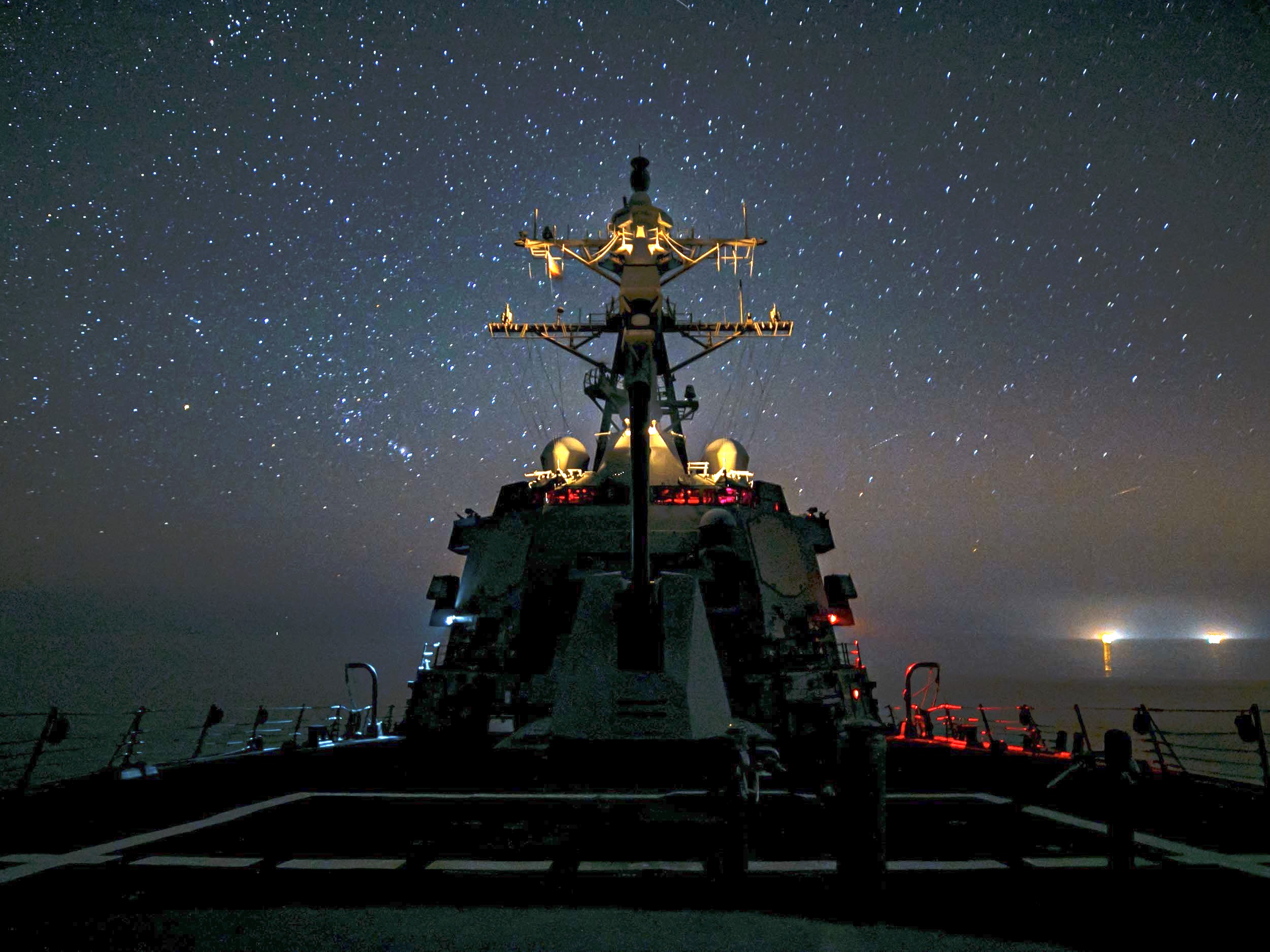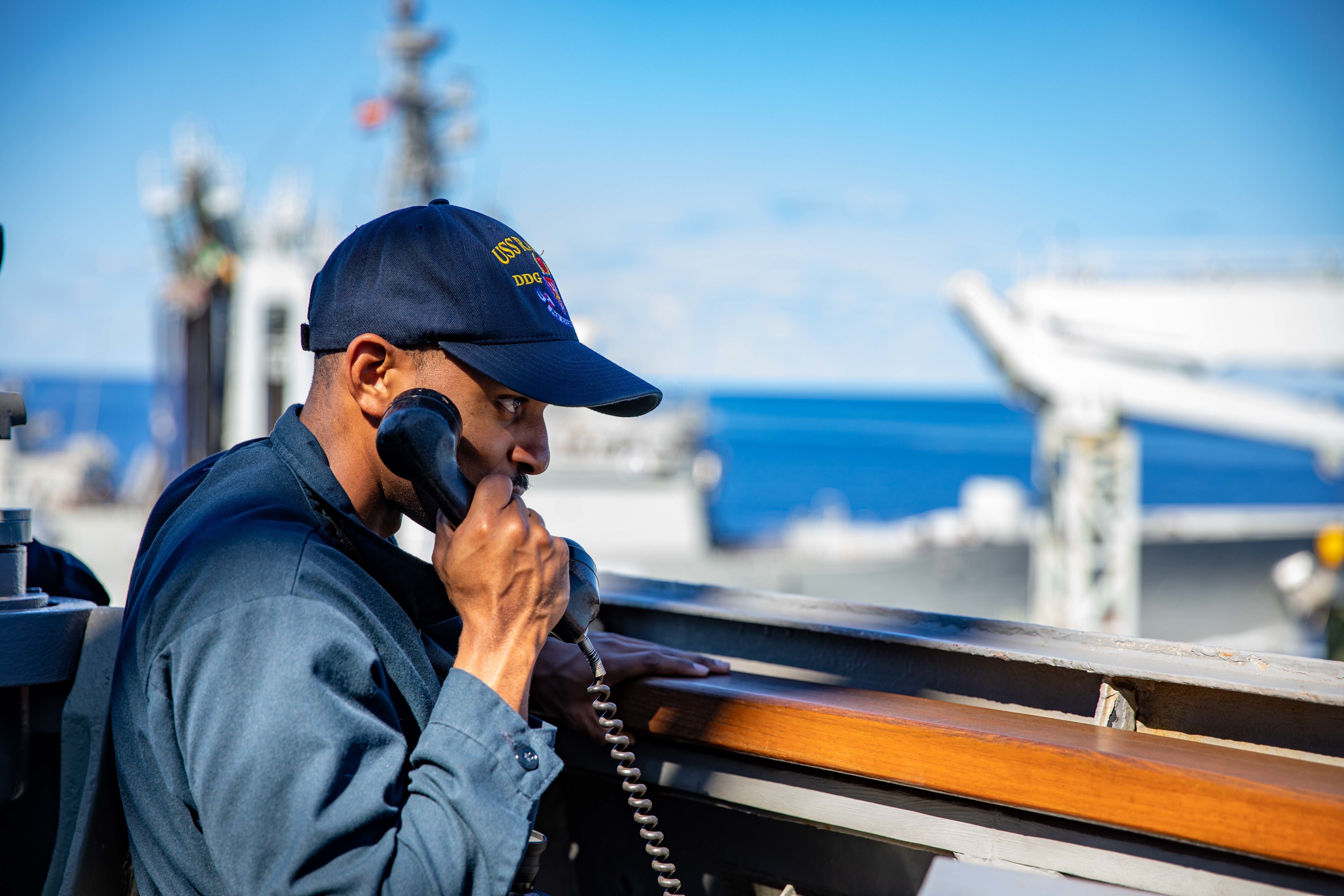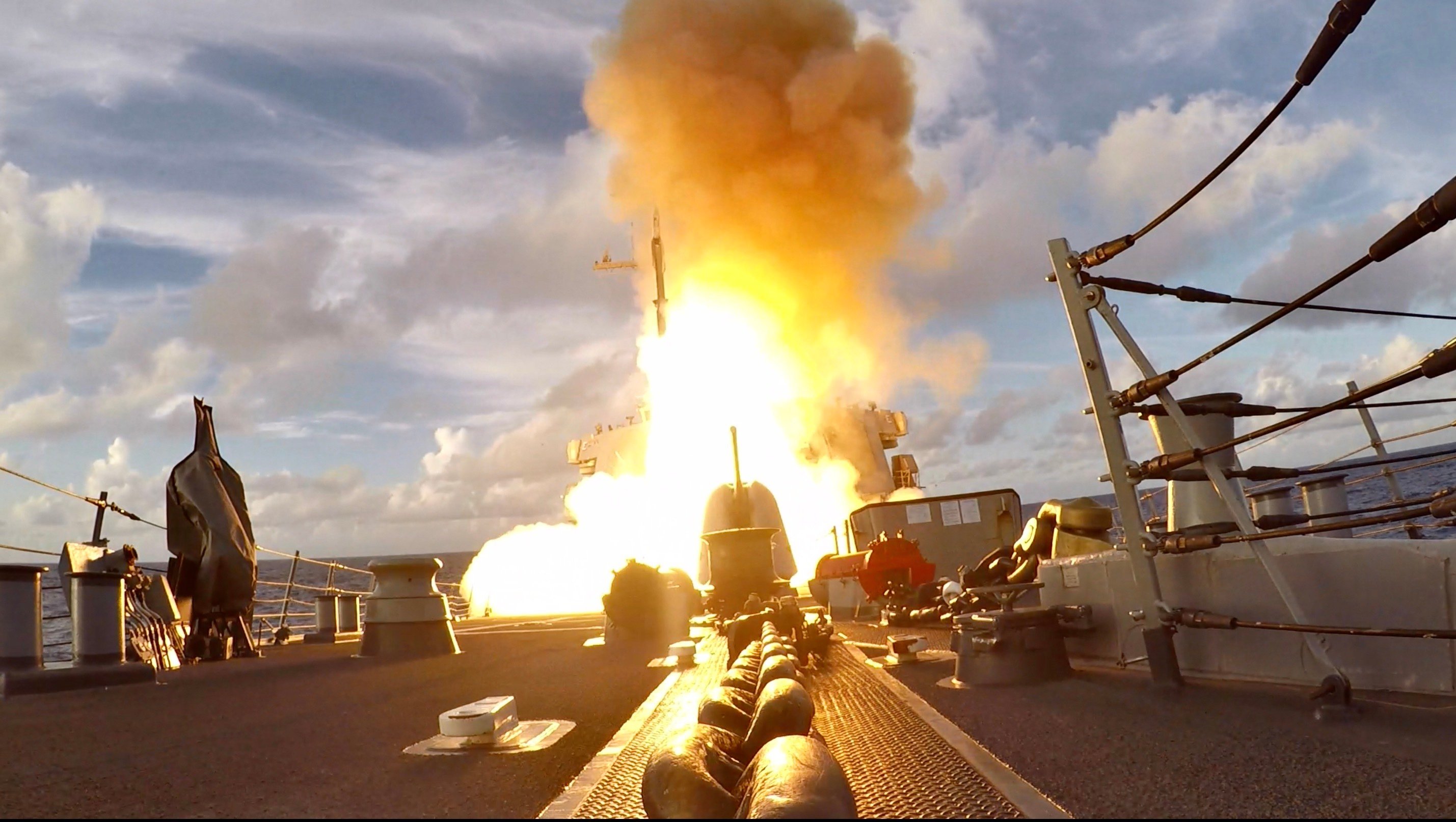
The Navy has set a new goal to have 75 mission-capable surface ships that are prepared to deploy at any given moment
The readiness objective to keep a little less than half of the surface ship inventory ready to deploy is part of a larger initiative to overhaul the service’s organizational structures to better shape how the it maintains ships both in port during maintenance phases and deployments to various areas of responsibility, Vice Adm. Roy Kitchener, the commander of Naval Surface Forces, told reporters last week.
“That goal is not arbitrary. It’s not random. It was born from our investments in our data analytics and a really good, thorough assessment across the fleet operational requirements. And I would tell you that 75 drives every program and action we take across our force in our enterprise,” Kitchener said in a media call ahead of the Surface Navy Association’s annual symposium.
“We make much better data-informed decisions, focusing where we need to invest resources in order to make that force more ready, whether that’s in equipment, in spares, how we do our manning actions, or what we target to bring into the Navy, and also in our scheduling, which is sometimes an important aspect we don’t always talk about.”
The pool of those mission-capable ships comprises cruisers, destroyers, Littoral Combat Ships, mine-counter measures ships, both LHA and LHD amphibious assault ships, and LPDs and LSDs for a total of 164 surface ships, a spokesman for Naval Surface Forces told USNI News.
Those don’t include the Navy’s expeditionary sea bases, the service’s two command ships and the trio of Zumwalt-class guided-missile destroyers, the spokesman told USNI News.

“ESB, LCC, and DDG-1000 class ships [are] excluded right now as there are too few of these ships to include as the priority of our efforts. Those ships will likely be included in the future,” said Cmdr. Arlo Abrahamson.
Aircraft carriers, submarines, and ships under Military Sealift Command are not part of the 164, Abrahamson said.
The service hopes to achieve that 75-ship goal in the next two years and is working on a “surface response plan” to determine how best to use its ships and what type commanders in both the Pacific and Atlantic regions need to keep the ships ready.
“We’ve stood up surface maintenance operations centers. They’re designed – we call them S-MOCs – but they’re designed to attack all the challenges of current readiness, as they focus on driving down [casualty reports], prioritizing repairs and parts,” Kitchener said. “And we feed that back into the broader system and where we need to address our resource funding and where our money’s spent. What specific spares do we need?”
To help achieve this, the Navy is creating Surface Readiness Groups that will usher ships from the various maintenance phases through deployments and fulfill the readiness oversight role throughout the Optimized Fleet Response Plan, Kitchener wrote in a November CIMSEC article.
“I really think that those commands are going to be better positioned to support our ships and our forward fleet commanders, as we [get] the surface force more ready,” he told reporters last week.
The surface groups, which will exist within the fleet concentration areas, are a response to Kitchener’s conclusion that the Navy’s destroyer and amphibious squadrons did not have the manning to achieve everything the service asked them to do.

“They have a warfighting role for deployed operations, then they have a man, train and equip oversight role when they’re in port and underway and the underway one on deployed operations isn’t going to go away. They will still have that oversight. But I didn’t think they had the proper manning to do that, or the expertise,” he told reporters during the call last week.
“Sometimes they were not geolocated with their ships, they were spread out as we tried to align ships to strike groups that were going to deploy together. And so I found, quite frankly, that we were doing a lot of the oversight of the readiness of those ships. And I needed to make sure I had better oversight and better readiness drivers in each fleet concentration area.”
Kitchener noted these SURFGRUs largely exist in most of the fleet concentrations, but his plan will expand the scope of those entities.
“The team’s idea was, ‘okay, which one is the best construct? And how do we scale each one up?’ And then they would provide that oversight. And I think by doing that, you’re standardizing the missions, functions and tasks across the force. The number of ships assigned – and that’s based on the scale of where you are – there’s not as much travel and out of area responsibilities,” he said. “Quite frankly, I was looking to try to reduce that variance and by having a standard organization in each port, you deliver that.”
Those SURFGRUs will have personnel working in the shipyard during a maintenance period so they can get aboard the ship and see what types of issues it may be having, Kitchener said when asked about the surface maintenance backlog at the yards.
“For example, and the biggest one in the shipyard – which I think we can do better as a force – is that when we restore legacy equipment after doing modernization, we struggled a little bit, you know, bringing some of those older systems back out of layup and get them operational, and then integrating them into the modernization,” he said. “We haven’t done as well as I’d liked there. And I think this group, with the larger TYCOM support, will be much more adept at doing that. And I can’t rely on a DESRON to do that job.”
The surface community now has three readiness categories for its ships – fully mission-capable, mission-capable, and non-mission capable. Non-mission-capable ships are ones in maintenance phases or recently out of maintenance and starting workups, while fully mission-capable ships are prepared to deploy with all the certifications and weapons needed to participate in combat, Kitchener said.

“When I talk about mission-capable, that sort of implies, ‘okay, I’ve got a standard of readiness that will allow us to deploy or perhaps to accelerate to deploy, and that includes a level of certification that enables that,” he said of the middle tier of readiness.
“So it allows us to say, ‘okay, these are the mission-capable ships. They’re capable of doing all these missions, and then it allows us to understand, ‘okay what do I need to get them to full mission-capable,’ which can drive resourcing decisions and decisions on the waterfront to prioritize and allocate resources, particularly as we look to rush forces to the fight, if needed.”
Kitchener wouldn’t define what a mission-capable ship would be able to do, but a ship and crew of a guided-missile destroyer must perform more than a dozen missions to be fully mission-capable, including surface warfare, anti-submarine warfare, electronic warfare and anti-air warfare.
As for holding itself accountable to the 75-ship goal, Kitchener said the Navy will rely on the data.
“As you drive into the different areas you can see, ‘okay, you know, all this work got us to a number, how come we’re stuck here at the plateau? Why are we not able to move above it?’ And then you can clearly see in some cases, for sparing for example, or if it’s one common part that’s holding us back or one engineering difficulty, we can hone in on it much quicker and address that, whether it’s a class issue, whether it’s for across all ships. So it is about accountability. And I’m relying on the data to tell us where,” he said.





